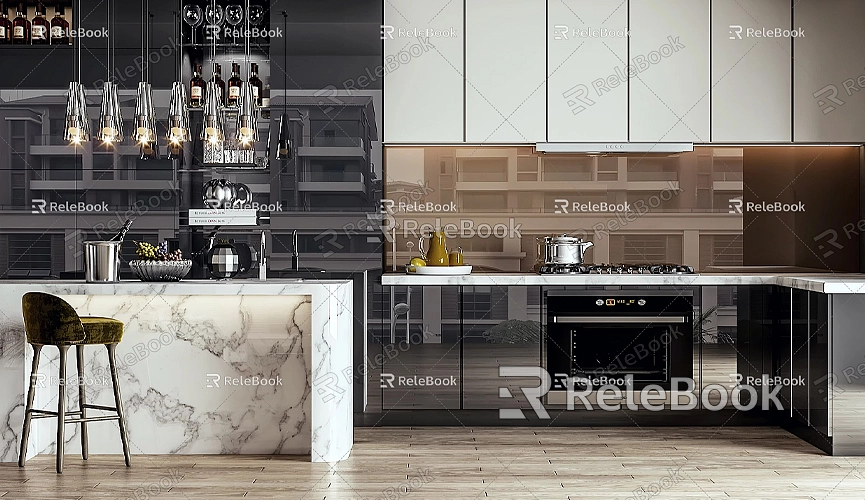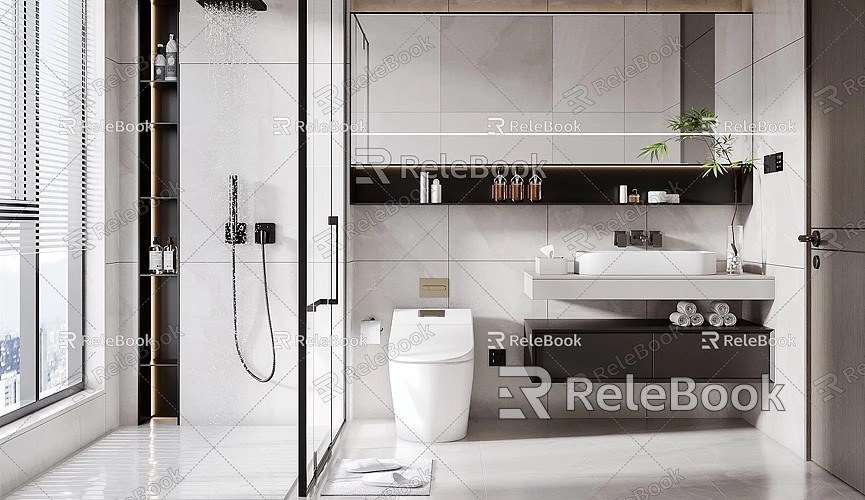How to Import Models from Workshop into SketchUp Pro
In the world of 3D modeling, SketchUp Pro is a professional design software widely used in fields such as architectural design, interior decoration, landscape planning, and many others. Its user-friendly interface and powerful features make it a top choice for designers and artists. SketchUp Pro not only supports building models from scratch, but it also makes it easy to import external resources, helping users accelerate the design process. This is particularly useful when designers want to use pre-made models from external platforms, making the ability to seamlessly import models a common requirement.
Workshop is a popular 3D model resource platform offering a vast collection of free, high-quality models suitable for various design needs. These models include architectural components, furniture, props, landscape elements, and more, allowing designers to easily download and incorporate them into their projects, saving time and effort. However, for many newcomers, the process of correctly importing models downloaded from Workshop into SketchUp Pro can be a challenge. This article will provide a detailed guide on how to import Workshop models into SketchUp Pro, along with some practical tips to help you increase efficiency and improve your design outcomes.

Introduction to the Workshop Platform
Workshop is a widely-used 3D model sharing platform that offers a variety of free 3D model resources. Whether you are working on architectural design, interior decoration, or creating games and animations, Workshop provides a large selection of high-quality assets. These models are typically available in several formats, including SKP, DAE, OBJ, and 3DS. Through Workshop, designers can easily access various design elements, eliminating the need to start from scratch, greatly enhancing workflow efficiency.
Workshop offers a rich range of model categories, including but not limited to:
- Architectural Components: Doors, windows, roofs, walls, stairs, etc.
- Furniture and Decorations: Sofas, tables, lighting, appliances, etc.
- Landscape Elements: Trees, lawns, roads, urban streets, etc.
- Props and Accessories: Books, tableware, tools, and more.
These resources can be directly used in personal projects or serve as base templates for further modification and optimization, helping designers achieve higher-quality designs in less time.
How to Import Workshop Models into SketchUp Pro
When importing models downloaded from Workshop into SketchUp Pro, it's important to understand the characteristics of different file formats and how to import them correctly. Since Workshop offers a wide variety of file formats, designers need to choose the appropriate import method based on the format of the downloaded file.

Confirm the Model’s File Format
First, the Workshop models you download will typically be in one of several common file formats. Based on SketchUp Pro's compatibility, you can select the best import method for your needs. The most common file formats include:
- .skp format: This is SketchUp’s native file format, and importing it is the most straightforward. It opens directly and seamlessly in SketchUp.
- .dae format (Collada): A common, universal 3D format. SketchUp can import this format, usually for models created in other modeling software.
- .obj format: This format supports textures and material mapping, ideal for models created in other 3D software like Blender or Maya.
- .3ds format: Although .3ds is the standard format for 3ds Max, SketchUp can also import this format with some adjustments.
By selecting the appropriate format, you can avoid compatibility issues during the import process. The best case scenario is downloading SketchUp’s native .skp format files, as these will import seamlessly into SketchUp.
Importing SKP Files
If you downloaded a SketchUp native .skp file, the import process is very simple. All you need to do is go to File > Open in SketchUp Pro, choose your downloaded model file, and click Open. The model will load directly into SketchUp’s workspace. All geometry, textures, and materials will remain intact without requiring any additional steps.
Once imported, you can easily adjust the model in SketchUp, such as changing its position, rotation angle, or scaling. Since the file format is native to SketchUp, there are minimal compatibility issues, and all data will transfer accurately.
Importing DAE Files
If you downloaded a .dae (Collada) file, the import process is also straightforward. In SketchUp Pro, go to File > Import, and in the file selection window, choose your .dae file. After importing, SketchUp will attempt to automatically process the geometry, textures, and materials in the file. However, because Collada files may differ in how they handle these elements compared to SketchUp files, some textures may not display correctly.
After the import, you might need to manually adjust texture mapping or reapply materials. It’s important to check if the model is complete and confirm that each part’s details were imported correctly. SketchUp’s Materials tools can help you quickly fix and adjust the model’s appearance.
Importing OBJ and 3DS Files
For .obj or .3ds file imports, the process is slightly more complex. The .obj format typically includes textures and material mapping, but you will need a plugin to import it. SketchUp does not natively support .obj file imports, so you will need to use a third-party plugin, such as the SketchUp OBJ Importer.
For .3ds files, SketchUp offers import functionality, but the results may not always be ideal. If the model is particularly complex, additional adjustments may be necessary. In this case, using a dedicated plugin for importing these file formats will be a more reliable choice.
Using Plugins to Optimize the Import Process
To ensure a smooth import process, designers can utilize some SketchUp plugins to extend the import functionality. For example, the SimLab 3D Plugin supports importing various file formats, including .dae, .obj, .fbx, and more. These formats are widely used in other 3D modeling software, so the plugin allows for easier importing and optimization of external resources.
Additionally, plugins can help automatically adjust the size, scale, and materials of the imported model, reducing the amount of manual adjustment needed after import.
Adjusting the Imported Model
After importing the model, you might encounter issues such as missing textures, incorrect scale, or improperly displayed geometry. In these cases, you can adjust the model’s size, position, and rotation as needed. In SketchUp, you can use the Scale tool to adjust the proportions, or the Move and Rotate tools to modify the model’s position and orientation.
If the textures are problematic, first check if the texture paths are correct. You can manually specify the location of the texture files or reload them. If there are issues with texture mapping, SketchUp offers powerful Material Editing features that let you reapply or adjust the size, orientation, and application of textures.
Model Optimization and Simplification
When importing external models, especially from Workshop, the models may contain many polygons, which can slow down SketchUp’s performance. In such cases, optimizing the model’s geometry is crucial. You can use SketchUp’s Simplify tool to reduce the number of unnecessary polygons, improving rendering efficiency.
Additionally, cleaning up unnecessary hidden geometry, groups, and components is an important step in optimizing the model. SketchUp’s built-in Cleanup function can help you easily delete unused elements, thus improving workflow efficiency.
Enhancing Design with Relebook Resources
In addition to importing Workshop models, designers often require high-quality textures, HDRIs, and other 3D resources to enhance the realism and detail of their projects. If you need high-quality 3D textures and HDRIs for your models and virtual scenes, you can download them for free from [https://textures.relebook.com/](https://textures.relebook.com/). If you need beautiful 3D models, you can download them from [https://3dmodels.relebook.com/](https://3dmodels.relebook.com/). Relebook offers a large selection of premium 3D resources to help you enhance the visual appeal and detail of your SketchUp projects. Through Relebook, you can access additional assets to further improve your designs and elevate the overall quality of your project.
Importing models from Workshop into SketchUp Pro can significantly boost design efficiency and save a lot of time on modeling. By choosing the right file format and utilizing SketchUp Pro's import functionality or plugins, you can easily bring in a wide variety of external model resources, making further adjustments and optimizations as needed. During the import process, ensure that the geometry, textures, and materials are displayed correctly and make fine adjustments to achieve the best design results.
In addition to using Workshop models, designers can access even more high-quality 3D resources through platforms like Relebook, further enriching the details of their projects.

